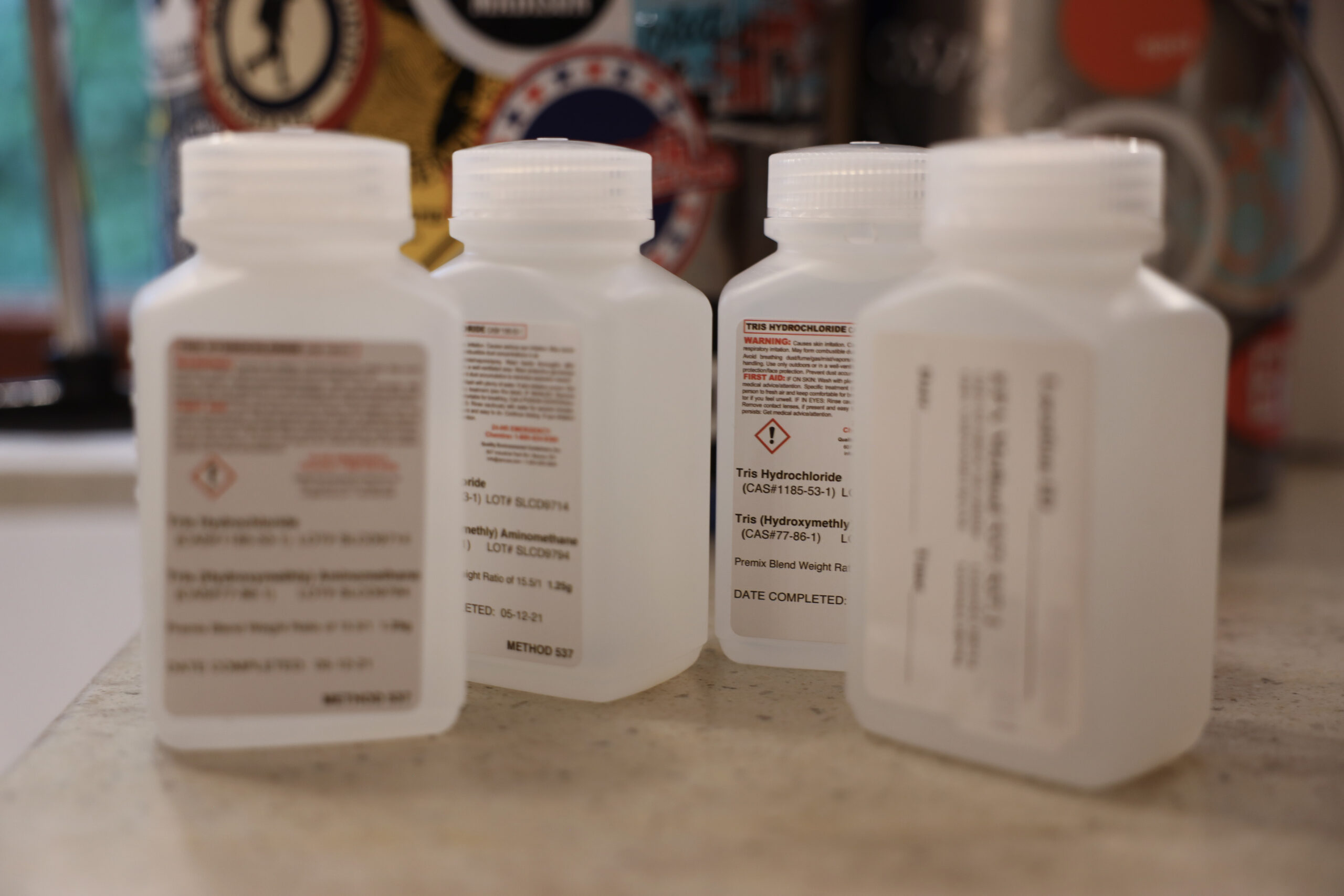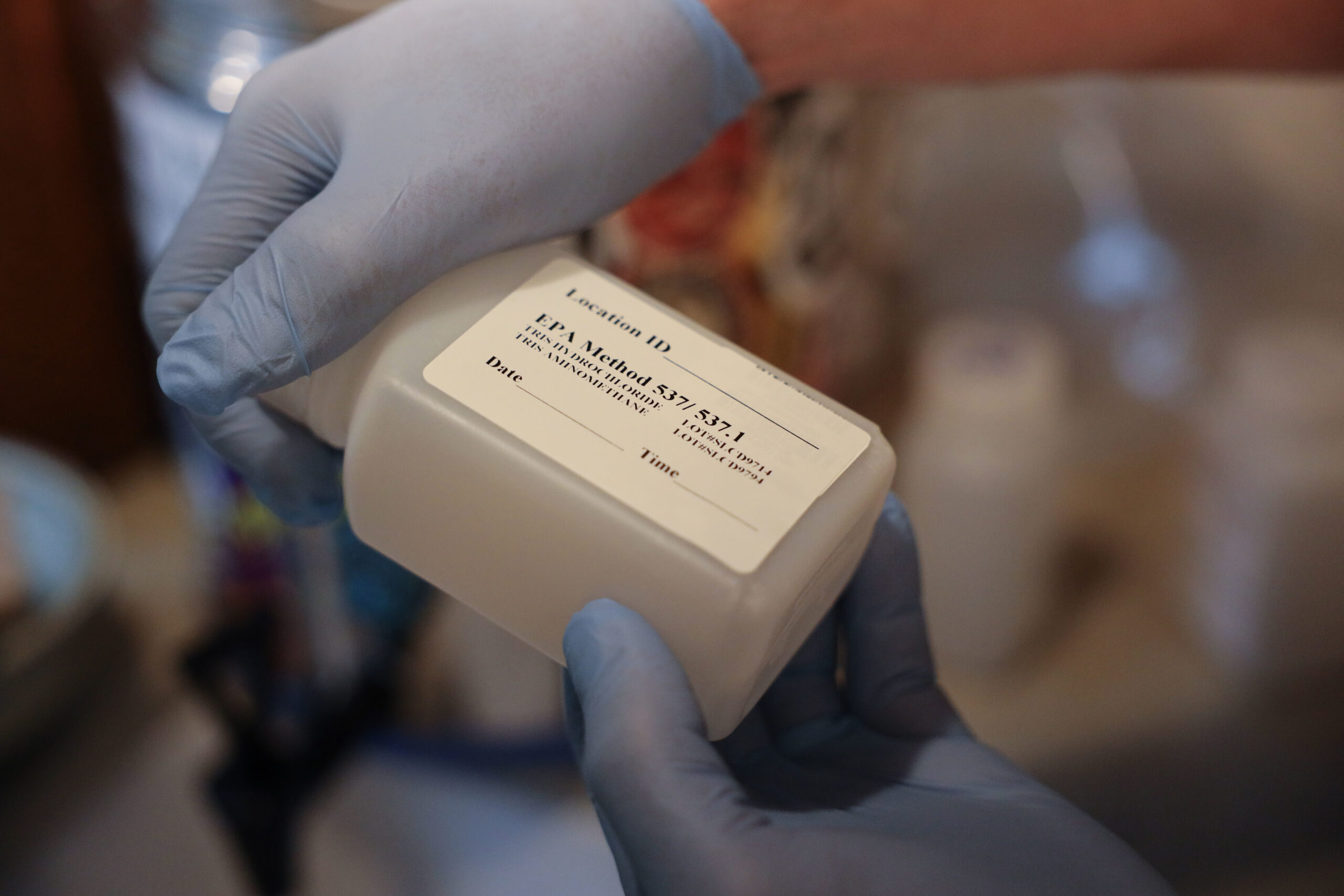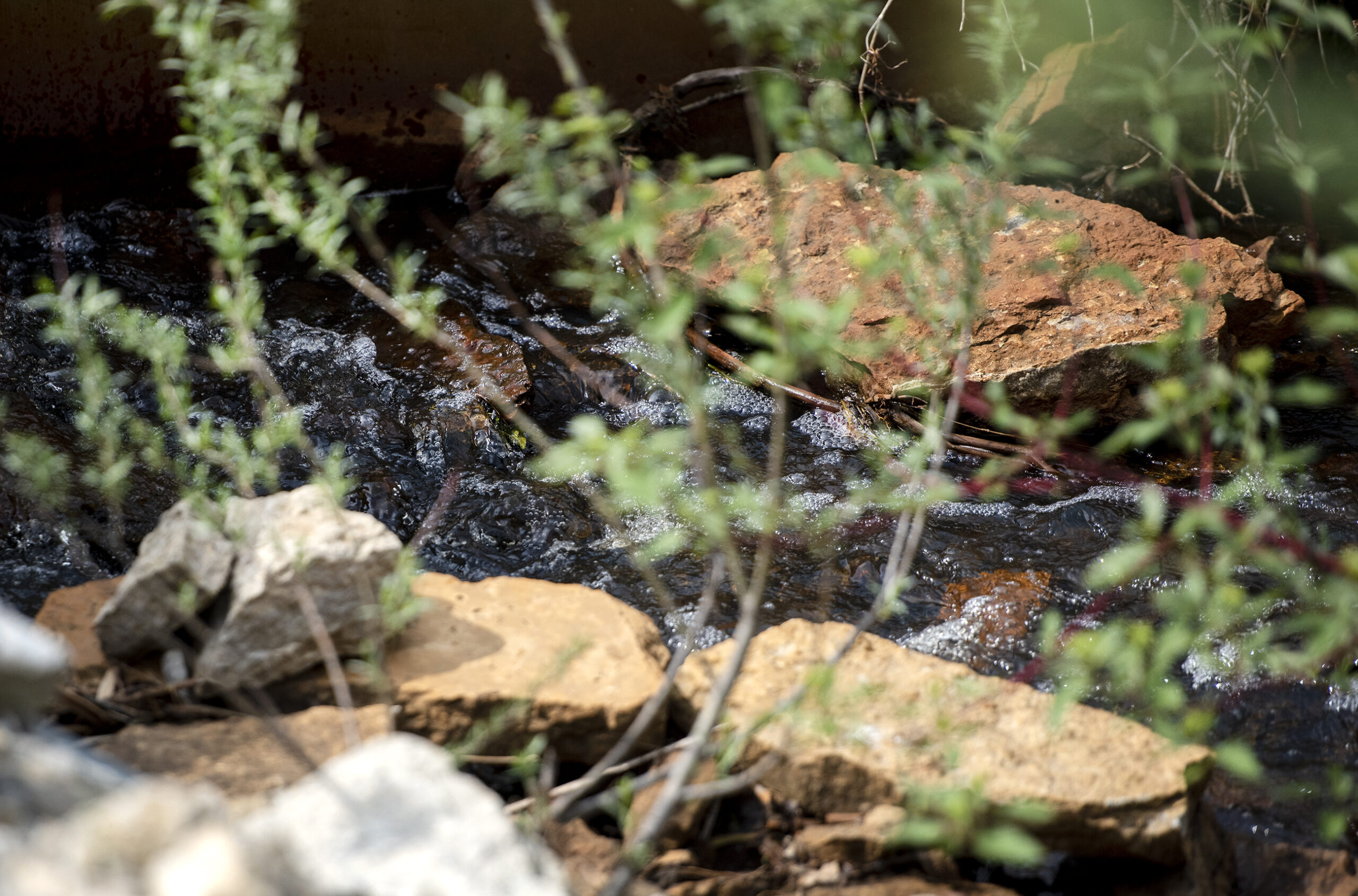In a sweeping proposal, Gov. Tony Evers announced Tuesday that his budget will include more than $145 million to address PFAS contamination and exempt innocent landowners from paying to clean up pollution from the harmful chemicals.
The Democratic governor said his proposal would fund new grant programs, staff, testing and research to understand the scope of the problem and eliminate PFAS. Evers also unveiled a new effort to craft groundwater standards for six PFAS chemicals, and he proposed adoption of a Democratic-led bill that would change state laws to improve water quality.
“We have a responsibility to ensure Wisconsinites have access to safe, clean drinking water no matter where they live in our state. This is an urgent issue, and we cannot afford more years of inaction and obstruction,” Evers said in a statement. “I urge Republicans and Democrats to work together to do what’s best for our kids and Wisconsin’s families by investing in critical efforts to improve water quality and get contaminants out of our water in our next state budget.”
Evers is set to unveil his plan for the next two-year state budget on Feb. 18, and Republican lawmakers have already vowed to strip many of his proposals.
The Democratic governor said his plan to combat PFAS contamination would be largely funded through $125 million he and the GOP-controlled Legislature set aside under the current budget. Nearly 600 days since the budget passed, the money has yet to be released as the governor and lawmakers have sparred over how to spend the funds.
Evers’ plan would devote more than $100 million to new grant programs. The bulk of the money would fund PFAS testing for municipal drinking water systems, but it would also help private well owners test for the chemicals. About $26.5 million would go toward researching ways to destroy and dispose of PFAS, as well as sampling and testing to gauge the scope of the problem. About $6.4 million would go toward grants for local businesses and communities to eliminate the use of PFAS.
The governor’s proposal would also provide nearly $2 million for emergency response, including the provision of bottled water to households facing PFAS contamination. The plan would also create 10 full-time positions at the state Department of Natural Resources and one position at the Department of Health Services through nearly $1.8 million over the biennium. State health officials would also receive nearly $1.3 million for studies to monitor PFAS exposure among residents.

Evers proposes liability exemptions for innocent landowners
Stay informed on the latest news
Sign up for WPR’s email newsletter.
Last year, GOP lawmakers introduced a bill that would’ve spent the $125 million on grants for local governments, landfills and landowners facing PFAS pollution through no fault of their own. In April, Evers vetoed the bill over fears it would limit the DNR’s authority to require polluters to test and clean up contamination under the law.
Evers is now proposing that residents and farmers won’t be held financially responsible for cleaning up PFAS if they unknowingly allowed spreading of contaminated biosolids or sewage sludge on their lands. The governor’s office said an exemption for those landowners will be added to the state’s Spills Law when the budget is enacted. The law currently requires anyone who causes, possesses or controls a hazardous substance that’s been released into the environment to clean it up.
Speaking to reporters Tuesday, Evers said his proposal doesn’t let companies that created PFAS contamination off the hook.
“People that make PFAS have to step up and help make this whole, not the farmers that have it on their land,” Evers told reporters. “So we’re doing what we feel is appropriate. And frankly, towards the end of the conversations with the Legislature last time, that was their main point, and so now we’ve addressed it.”
Rob Lee is a staff attorney with Midwest Environmental Advocates. He said a narrow exemption for “truly innocent landowners, like farmers ” has broad support.
“But at the same time, we have to be careful about amending the Spills Law and make sure that we don’t create loopholes that polluters can exploit,” Lee said.
Sen. Eric Wimberger, R-Oconto, has criticized the DNR for allowing continued spreading of contaminated sewage sludge, and he pressed for changes to protect innocent landowners.
“It seems Governor Evers has come around to my position and supports my bill that he vetoed last year,” Wimberger said in a statement. “His proposals today are an admission of what I’ve been saying for years: we can’t just write the DNR a check for $125 million to fight this problem. We need a strong legal framework to fight PFAS contamination, including language protecting innocent landowners from being treated like polluters.”
Wimberger said Evers has refused to respond to the lawmaker’s requests to clarify who is considered an “innocent landowner.” Evers said his budget would increase sampling, testing and cleanup of PFAS in sewage sludge through $7 million in new state funding. His proposal would also bar spreading of biosolids with high PFAS levels.

Evers unveils new effort to craft standards for 6 PFAS chemicals
Evers also approved new rulemaking for six PFAS after the Environmental Protection Agency finalized drinking water standards for the chemicals last year. The DNR is proposing identical limits to federal regulators of 4 parts per trillion for PFOA and PFOS, as well as 10 parts per trillion for PFNA, PFHxS and HFPO-DA or GenX chemicals. It also sets levels for a mix of two or more of the chemicals PFNA, PFHxS, PFBS and GenX Chemicals.
A 2017 law passed by GOP lawmakers forced the DNR to abandon groundwater standards for PFAS in 2023 after previous attempts to set limits in groundwater failed. The law known as the REINS Act aimed to limit excessive compliance costs of regulations.
Town of Peshtigo resident Cindy Boyle has been drinking bottled water for years due to PFAS contamination of her well stemming from a Marinette manufacturer of firefighting foam. Boyle said she doesn’t understand why Democrats and Republicans can’t come together to set standards for nearly one third of state residents who rely on private wells.
“It is going to take cooperation to get groundwater standards passed and really meaningful action around PFAS for the state of Wisconsin,” Boyle said.
Evers is seeking to exempt DNR rulemaking from the law through adoption of the Chemical Level Enforcement and Remediation, or CLEAR, Act. The governor and Democrats put forth similar versions of the bill in 2019 and 2021, but the legislation has failed to advance in the GOP-controlled Legislature. In December, Senate Majority Leader Devin LeMahieu, R-Oostburg, said any attempt to repeal or limit the REINS Act would move the state backward.
PFAS, short for per- and polyfluoroalkyl substances, are a class of thousands of synthetic chemicals widely used by industry since the 1940s. They’re found in everyday products like nonstick cookware, stain-resistant clothing, food wrappers and firefighting foam. The chemicals don’t break down easily in the environment.
Research shows high exposure to PFAS has been linked to kidney and testicular cancers, fertility issues, thyroid disease and reduced response to vaccines over time.
The chemicals have been found in public and private wells in communities large and small. They include the towns of Campbell, Stella and Peshtigo along with the cities of Madison, Eau Claire and Wausau. About 90 public water systems in Wisconsin must now treat their water or drill a new well to meet the federal regulations, according to the DNR.

Local officials hopeful state money will help cover ongoing cost of contamination
Evers visited the town of Campbell on French Island to talk with local officials and residents about the proposed funding on Tuesday.
The governor stopped at the site of a new municipal well the town will begin construction on this spring in order to replace hundreds of private wells on the island that have PFAS contamination. Town officials estimate creating the municipal water system will cost roughly $40 million.
“We’ll obviously be doing whatever we can to help the people here on French Island to have clean water and get this done,” Evers told reporters Tuesday. “They’ve been hanging out and dealing with this for far too long. They now have a plan, so that helps us plan appropriately. So we’re looking forward to having the Legislature give us a hand.”
It’s been nearly four years since DHS first issued an interim drinking water advisory for the town on French Island due to widespread contamination. State data shows 30 percent of tested public and private wells had PFAS levels above state recommendations, while the vast majority had some level of PFAS detected.
Town board member Lee Donahue said she’s hopeful the governor’s proposal will finally move the $125 million in previously approved funding into the hands of communities like hers that are currently dealing with the cost of contamination.
“If we can’t pay for the solution, we can’t get there,” Donahue said. “Having access to some financial resources that will help us get to a place where we can turn on our faucets again and safely drink what comes out is really the bottom line for us.”
Listen to comments from Campbell Town Board member Lee Donahue on the proposal Tuesday.
She said the town is also hoping to access assistance through federal funding and existing state programs like the Safe Drinking Water Loan Program.
Town of Campbell leaders hope to begin delivering water through the new municipal system in 2027. Until then, Donahue said the DNR continues to provide bottled water to 1,557 households in the town at the cost of about $800,000 per year.
Wisconsin Public Radio, © Copyright 2025, Board of Regents of the University of Wisconsin System and Wisconsin Educational Communications Board.




